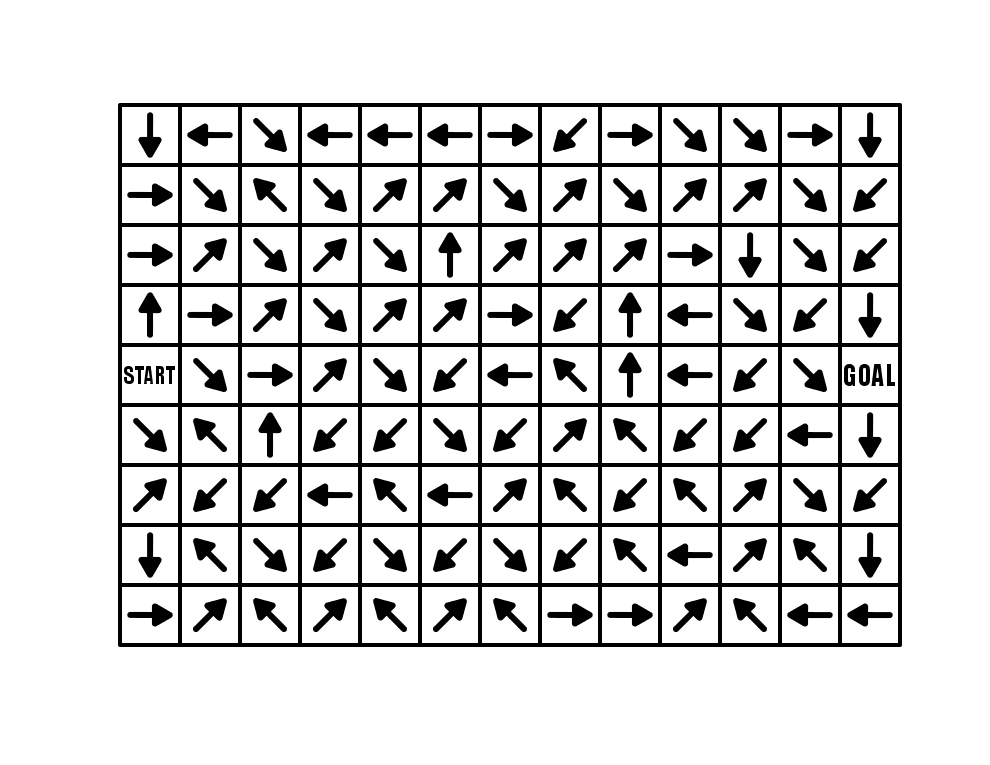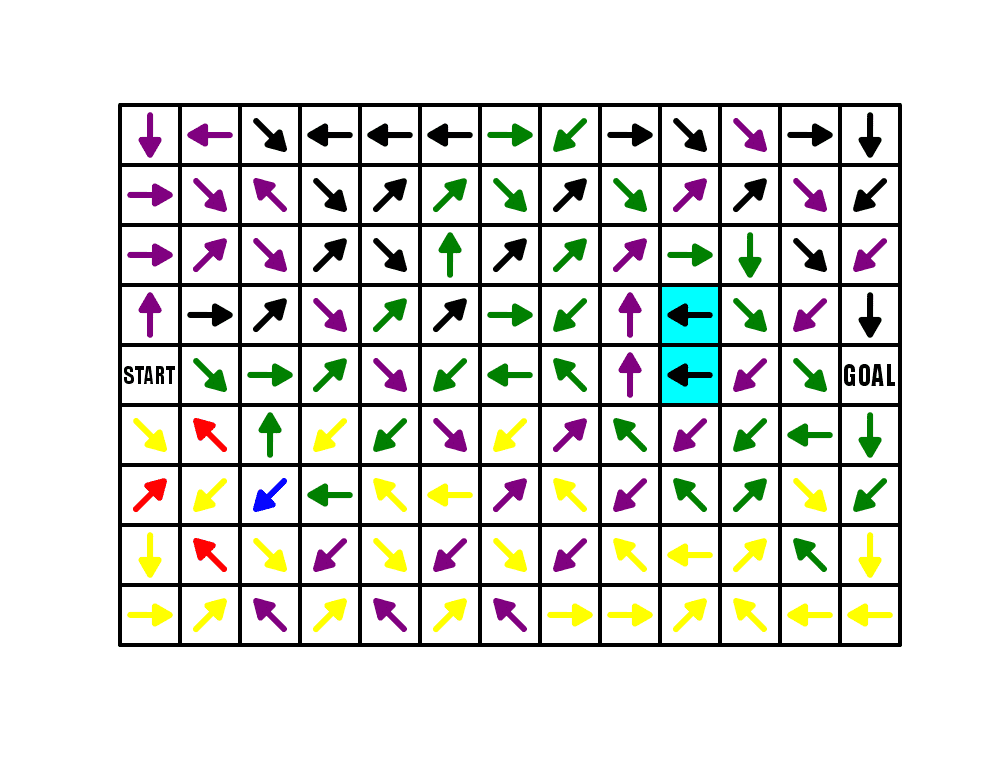Welcome to our next section of topics, Arrow Maze Components. From Part 5 - Part 12 I will look at specific types on blocks that can be used in an Arrow Maze. In this post I start with the most basic arrow, simply called the Regular Arrow.
Here is an overview of what we will be covering in the 14 part series:
Arrow Maze Construction and Design:
Arrow Maze Components:
Extreme Arrow Maze examples:
Arrow Maze Design Case Study - Part 5 - Regular Arrows
The core and most basic element of an arrow maze is the basic arrow, In fact, a beginner Arrow maze can be made using ONLY regular arrows. Let’s look at an example. Here is a 9 x 13 landscape Arrow Maze using only regular arrows. Go ahead and take some time to solve it.
Regular Arrow Maze
How was the experience ? If you chose the right path from the START it was a quick solve. If you did not chose correctly you eventually found this out when you returned to START after moving around the maze,
A maze with this design (regular arrows with no choices) is virtually the same in structure as a line leads maze popular in kids activity books. Let’s look at one of my Line Leads Mazes:
In both, you make an initial choice of paths, then follow it to see if you are correct. The incorrect Arrow pathways bring you back to START while the Line Leads Maze takes you back to another incorrect possible pathway. Otherwise these are very similar.
Let’s focus in on the START in our example. Highlighted in light blue, there are 4 possible pathways you may move to and one return pathway (which technically can be chosen but will immediately return you back to start). Your chance of choosing the correct path is 25%.
From a design standpoint you might be asking, wait, if there are 4 pathways out and only 1 is correct, leaving 3 incorrect pathways, how is there only 1 pathway back to the start ? Well, all of those incorrect pathways meet in 2 spots to form one incorrect pathway back to START. Again the highlighted section shows what we are speaking about. Incorrect pathways Yellow and Green combine at the Blue arrow which then combines with the 3rd incorrect pathway of Purple at the first Red arrow. The last 3 red arrows represent all 3 pathways (Yellow, Green, Purple) moving back to the START.
And finally, let’s look at each pathway to break down what happened in this maze. Purple, Green, and Yellow are the full false pathways (combining still to red in the end). Black arrows are the correct pathway. Two highlighted black arrows are “filler” arrows that are not actually used in any solution !!!
One last design technique you should be aware of when using regular arrows to design a maze. You may or may not have noticed that I usually use arrows at 45 degree angles (did you notice this before ?). I want to explain why this is the case. If you use arrows pointing in the standard NSEW directions, you will create pathways that CANNOT be crossed over. But using 45 degree angles will fix that. In the example below I have drawn one pathway using NSEW arrows and one with 45 degree arrows that travel essentially the same way. But if I continued to design each maze the NSEW version does not have much flexibility on where future pathways can go because the arrows have created a wall that cannot be crossed over.
In Part 6 I will discuss the Double Arrow






